The bus from Fes to the capital took its own time crawling through heavy traffic for the first 60 km or so. Once past Meknes, we hit the freeway and swallowed a few kilometres in quick time. Eventually, it took a couple of more hours to get to Rabat than we thought we would. "Rabba! Rabba!", the helper kept shouting at unsuspecting passersby in towns and outskirts sucking them into the bus at the slightest indication of interest.
Our late arrival was compounded by what maybe called "GPS anxiety". Our modus operandi for visiting a new place includes downloading the offline map of the city or region into the iPhone. Then we identify places of interest on the map (bus or train station, our choice of hotels, etc.) and place markers. When a bus or train pulls into the city, the GPS blue ball tracks our location and we manage to orient ourselves quickly on arrival. This is not merely a convenience but a potential life saver when we get lost in a maze of streets. It is a priceless experience to be able to land on your feet and walk with confidence in a totally new city. Sometimes, we would try and follow directions given by the hotel and look for a bus stop, but the GPS blue ball would show that we were less than 500m from our destination, so we would just walk.
A minor downside to this GPS dependence is illustrated by what happened as our bus approached Rabat. Instead of crossing a bridge into the old town, the bus went in a different direction. With the blue ball getting away from Rabat Medina, we started to engage in conversation with the driver and helpers. Rabat Medina? In return we got a torrent of French focused on the phrase "Gare Routiere". The problem was that we had not been able to place a marker for "Gare Routiere" on our offline map and so had no idea how far it was from Centreville. After some more incomprehensible (to us!) French, the helper offered "Taxi Medina Cinq Dirham". This was welcome intelligence and we relaxed knwoing that we won't have to deal with a long expensive cab fare after we got off the bus. The blue ball did a circuit of 20km, looping back into Rabat from the south as if we had traveled from Casablanca and not Fes. As is our wont, we crossed the street from "Gare Routiere" and caught a bus to Centreville, just opposite the entrance to Rabat Medina.
To our surprise, we found that several hotels were full and eventually managed to find room in one just opposite the Medina. Rabat is not a big tourist destination and we may have been blocked out by travelers with official government business.
We had an early start next morning with a taxi ride to the Embassy of the Islamic Republic of Mauritania to look for information on crossing the border. We were still not committed to the country given the lack of information on public transport across the border from Morocco. What we hoped for was to chat with a few others at the Embassy to get a feel for what to expect. The queue outside the gate was quite short but the embassy was not open yet. There was nobody around to hand out application forms and touts outside were charging a pretty packet for copies of the visa application. We needed the help of other visa aspirants to decipher the French on the form. There were several SUV and camper type vehicles with French license plates outside the embassy. We approached a friendly looking couple who were ahead of us in the queue and enquired about their travel plans. The had their own camper truck that they were driving from the south of France all the way to Senegal. They had actually hitchhiked the Mauritania-Morocco route the previous year and assured us of the existence of 5+ and 7+ shared taxis that ply from Dhakla in Western Sahara all the way to the border or even to Nouakchott. Encouraged by this meeting, we decided to commit to the visa application and figure our onward itinerary later. Even if we chose not to cross the border overland, we would have the option of flying into Nouakchott from Casablanca. Lets see.
On our way back to the hotel we stopped for breakfast and learnt another helpful phrase "Cafe Kasse". While the Mint tea experience in Morocco has been a big hit with us, the coffee experience has been hit and miss. "Cafe au Lait" came closest to what we prefer but in some places this resulted in excessive milk that diluted the effect and cooled the coffee. We found ourselves getting excessively verbose while placing our coffee orders and this only resulted in making things worse. We hit a low this morning in Rabat when our waiter brought us a cup of milk after we had placed our lengthy request. We spotted someone in the adjacent table with a glass of what seemed like the perfect brew and asked for that. Thus, "Cafe Kasse" entered our lives. It was definitely a hit and we learned later that it meant "Hit Coffee". A cup or glassful of hot coffee with just a dash of milk to give it some body. Hit it.
We lost no time in checking out of our hotel and heading out to explore the medina (old walled city), the mellah (Jewish quarter) and the Kasbah that was on a hill jutting into the Atlantic Ocean. The Rabat Medina was an oasis of calm after the frenzy of the Fes Medina. It was also much smaller and we managed to get a feel of the Medina and Mellah in a short half hour. It was nice to be ignored for a change! We exited from the mellah onto the waterfront. The Atlantic Ocean gleamed brilliantly blue in the bright sunshine and the white houses enclosed within the brown Kasbah walls made for an attractive contrast.
We climbed the gentle hill and successfully brushed off the faux guides ("This way to the Kasbah", "That is closed for prayers, come with me, I'll show you how to go" etc.) and explored the maze of lanes painted blue on the bottom half (presumably to ward off mosquitoes) and bright white on top. It was built by Muslim refugees from Spain and currently hot real estate prospect for foreigners looking for a tranquil home with ocean views in a pleasant laid back city.. Eventually, we emerged onto a broad terrace (Plateforme du Semaphore or Signal Hill) with sweeping views of the Atlantic Ocean and the River Oued Bou Regreg (yes, that is the name) that separates Rabat with the suburb of Sale right across on the other side.
On our return walk, we encountered a traditional gnawa singer belting out a traditional Moroccan song while twirling his head to make the tassled string attached to it swing in circles. A bus load of elderly European tourists suddenly emerged from a terrace-view cafe opposite and surrounded the man. Rabat is not really on the tourist circuit, but the Kasbah is unique and deserves a visit. A familiar sight awaited us in the form of the Andalusian Gardens inside the Kasbah, transporting us back a couple of weeks to the wonderful time we had in Southern Spain.
Rabat Kasbah Video
We had enough time to explore the Le Tour Hassan (Hassan Tower) and the Mausoleum of King Mohammed V. The tower is built to the same design as the Giralda in Seville (yet another Andalusian flashback!) and the Koutoubia in Marrakesh (flash forward to future destination!). The present king's father (Hassan II) and grandfather have been laid to rest in the Mausoleum. The ceremonial mounted guards try and keep a straight profile while tourists click away at their uniforms and the horses beneath them. The horses kick away at the muddy earth beneath them presumably disconcerted by all the attention. Visitors can view the tombs inside the ornately decorated mausoleum from a viewpoint above while guards stand on all four corners and outside the hall.
Come the afternoon, we sped in a cab to the Mauritanian Embassy to pick up our passports and then head for the Gare Rabat Ville railway station to move on to Casablanca. We spotted the friendly couple (Claudia and Ben) at the tail of a long queue and so had to let our taxi go. They offered to drop us at Casablanca after collecting our visas but we had a bit of a setback when we were told to wait outside. The window was closed for a half hour break (we still have no idea why) and the few who still had not got their passports back stood in line outside. We did not want Ben and Claudia to wait, but they were not in a hurry. The window eventually opened after the half-hour and we got our passports back now fattened with yet another visa.
Getting out of Rabat was quick as the sun set right in front of Ben's eyes as he drove the 90 km south to Casablanca. The interior of their cabin was furnished for sleeping in and equipped with a stove for cooking. It was dark by the time we reached the outskirts and the GPS blue ball made slow progress through Casablanca's crooked streets gridlocked with heavy evening traffic. The commercial capital of the country is a far cry from the air of romance its name evokes. Ambulance sirens drown out the loud horns of impatient taxis and private cars negotiating streets assembled in impossible angles, with dirt and litter strewn everywhere. It was fascinating and not cheerless. As the blue ball crawled within walking distance of our hotels of choice, Ben spotted a parking spot and claimed it. After checking into our hotel, we rejoined them for dinner.
The search for a place to eat is significantly different if you can speak to the locals. Claudia could speak both French and Arabic and we were soon escorted by someone we met casually on the street to a place with Harira (vegetarian soup) and Tagine. A man on the street shouted "India! Mohabbat! Welcome to Morocco" but inexplicably addressed these remarks to Ben and Claudia (we stood aside and offered no help!) and they were quite bemused. We had just told them what it was like to be Indian and tour these countries and the consequent attraction it gathers from locals fed on a steady diet of Indian films and now they knew what it was like to be us.
We exchanged stories about each other's travels over dinner and tea before they went on their way. We returned to our hotel for a well deserved rest after a long and eventful day. Casablanca!
Google Maps Link
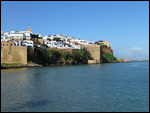

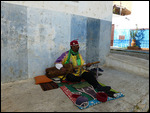
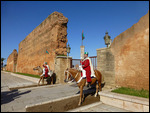
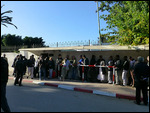
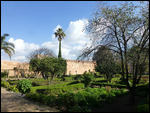
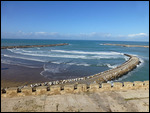
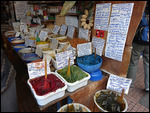
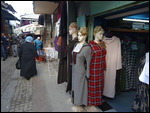
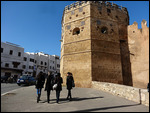
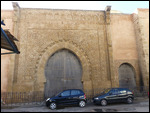
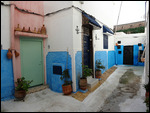
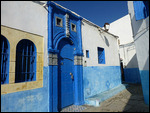


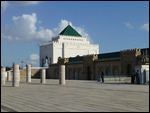


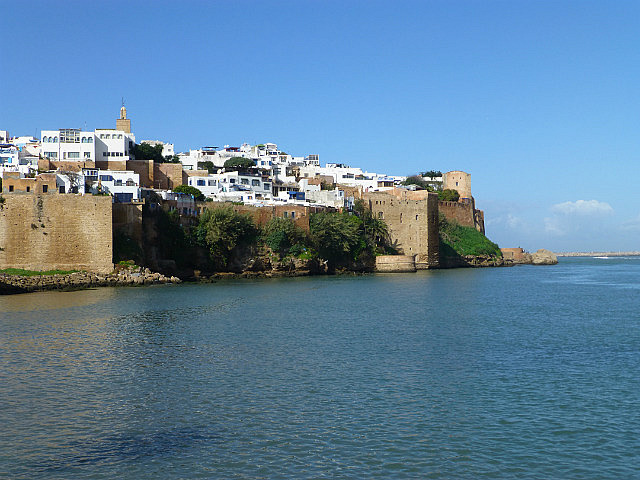

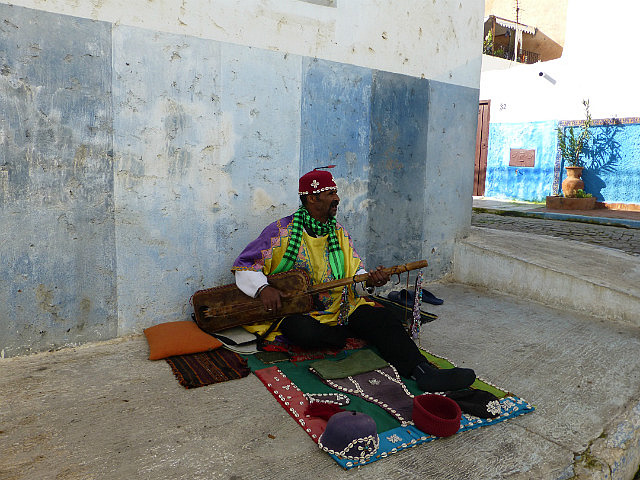

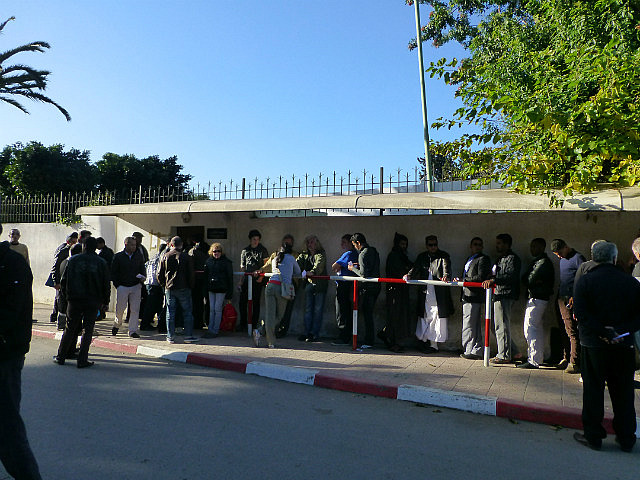
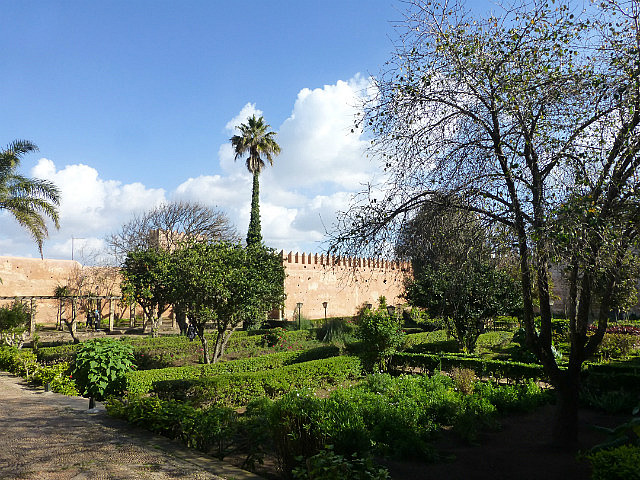
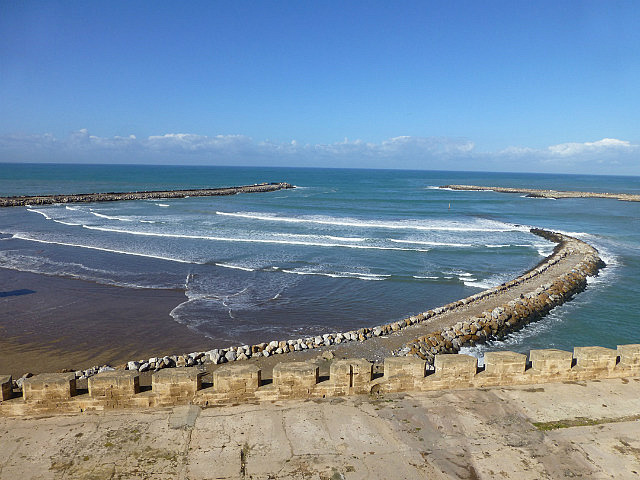
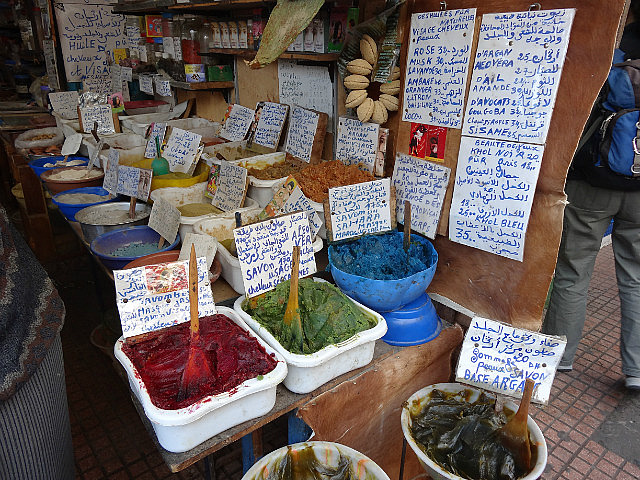

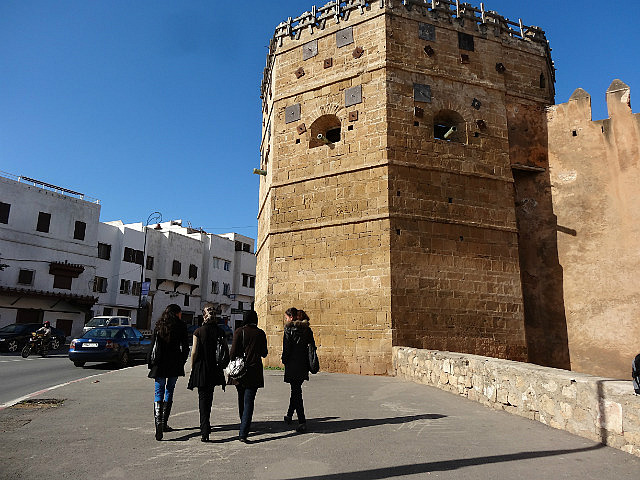
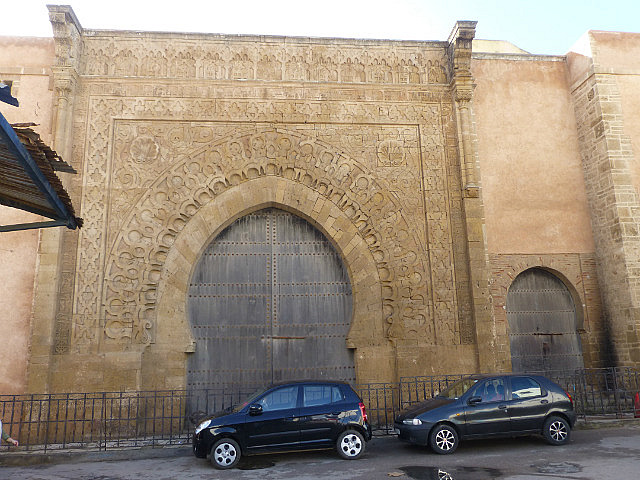
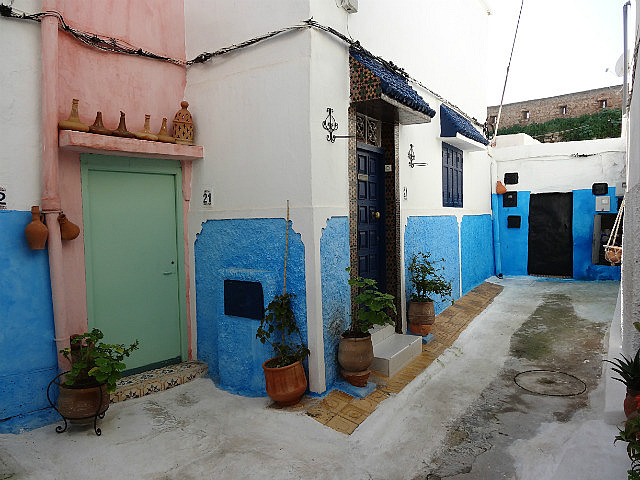
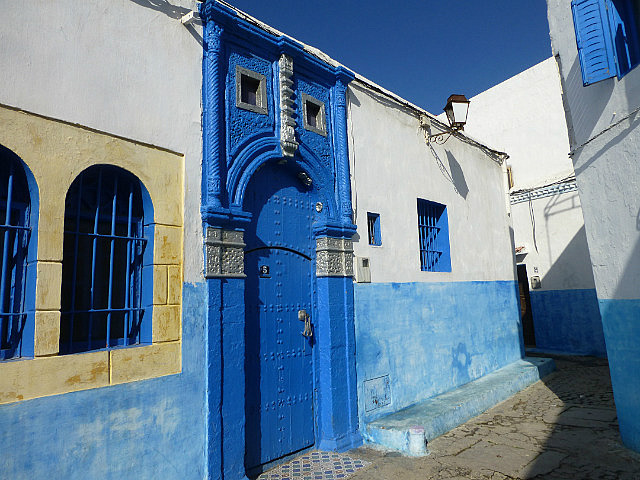
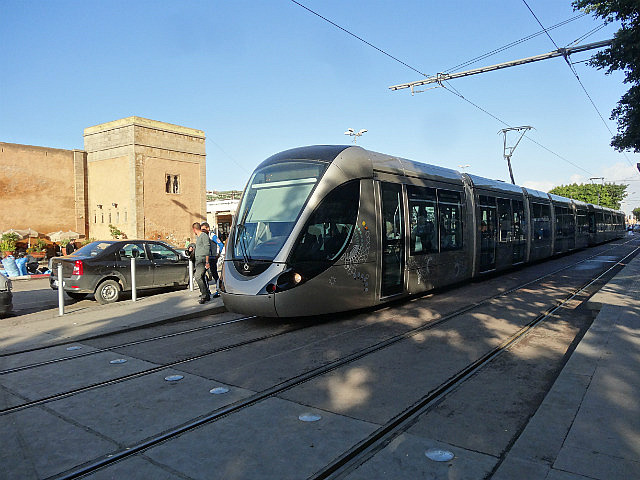
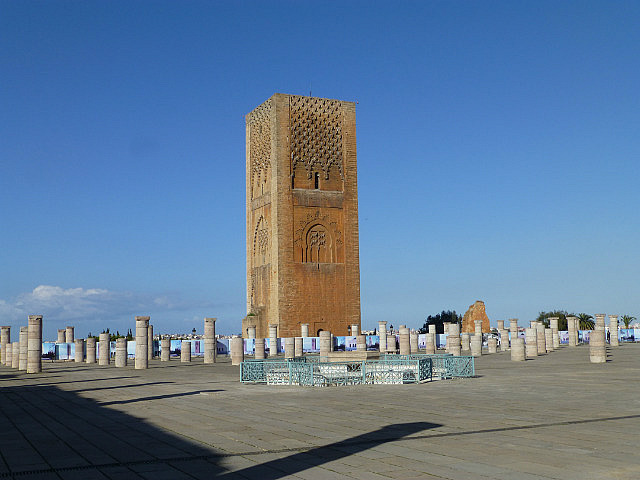
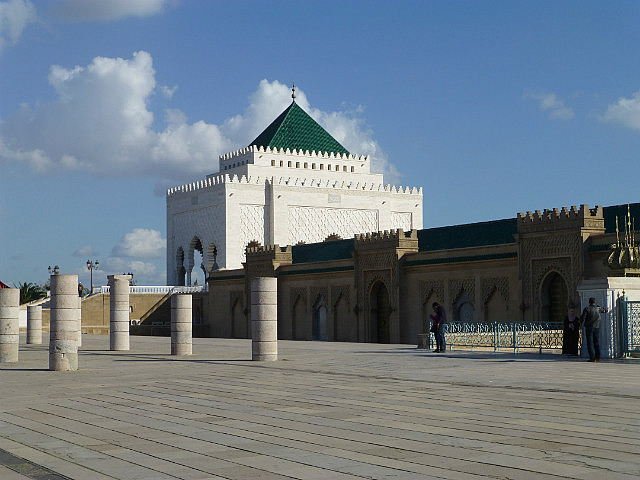
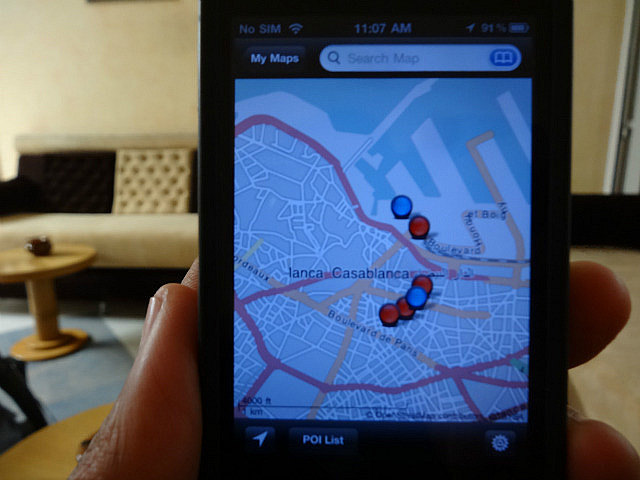

Comments